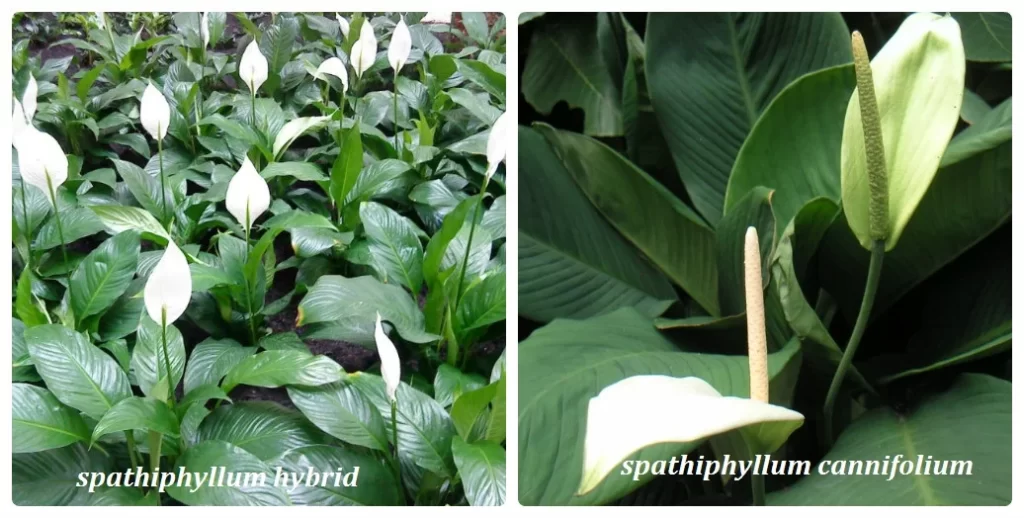Spathiphyllum is an ornamental plant that blooms in spring. The leaves grow from the roots, have an oval shape, during flowering, the flower looks like a “cob”, which is covered with a blanket. This plant in its natural environment is found in the tropical forests of Brazil and Colombia, as well as in the tropical forests of America and Venezuela. The name of the flower comes from the Greek words “spata” and “phyllum”, which in translation means cover and leaf.

Spathiphyllum is an indoor plant that does not require a lot of light. Spathiphyllum can be a great decoration for office space and rooms with poor lighting.
How to care for spathiphyllum
Despite its unpretentiousness to lighting, spathiphyllum needs high air humidity and abundant watering. Spathiphyllum is a heat-loving plant, it grows well at a temperature above 18 ° C, the ideal temperature for growth is 22-23 ° C. It does not like drafts.

Brightness of light
Spathiphyllum feels great in partial shade and even in the shade. But if the leaves of the spathiphyllum become smaller, begin to take on a more elongated shape, this means that it still does not have enough light.
Air temperature for spathiphyllum
In spring and summer, the temperature should not be lower than 18-22 ° C. In winter and early spring, the temperature should not be lower than 16 ° C, at temperatures below 16 ° C, spathiphyllum will slow down in development and will not bloom. If the temperature is 10 ° C and below, the spathiphyllum may begin to rot and die. The same with drafts.

How to water spathiphyllum
You need to water the plant with settled water. In spring, summer and during flowering, spathiphyllum is watered abundantly, as the top layer of soil dries out.
In winter, water less, not allowing the soil to dry out, too wet soil can lead to the death of spathiphyllum. With insufficient watering, the leaves wither, and with excessive watering, dark spots form on them.
Air humidity for spathiphyllum
Spathiphyllum needs very high air humidity. It is advisable to place the pot with the plant on a tray with wet expanded clay or pebbles. Even with regular daily spraying, the tips of the leaves can dry out. During flowering, it is impossible to allow water to get on the cob and cover. If the air humidity is sufficient, spathiphyllum can bloom for the second time during the rest period (autumn-winter).

When to feed spathiphyllum
Spathiphyllum should be fed like all other indoor flowers once every 14 days, with complex mineral fertilizers for flowering plants.
Before fertilizing spathiphyllum, it should be well watered. Spathiphyllum is fed twice a month in winter. With an excess of fertilizers, brown spots may appear on the leaves, lack of feeding at the end of winter – at the beginning of spring is most often the reason for the lack of repeated flowering.
Spathiphyllum transplant
Spathiphyllum is transplanted every year, in the spring, when the roots have completely filled the pot – this is done carefully so as not to damage the roots. For transplanting, take a loose substrate of equal parts of peat, humus, river sand, and leafy soil. The pot should be only slightly larger than the previous one, and there must be drainage at the bottom of the pot. After transplanting, the plant should be sprayed often, watered moderately, the temperature should not be low. You can cover the plant with a transparent polyethylene film, which can be removed twice a day for ventilation.
Reproduction of spathiphyllum
Spathiphyllum is propagated by dividing the bush. For reproduction, the temperature in the room should not be lower than 22 ° C.
Diseases and pests
Of the pests, spathiphyllum most often suffers from thrips and mealybugs.
Mistakes in spathiphyllum care
- Overdrying of the soil, due to which the leaves become sluggish.
- Air temperature below 16 degrees disrupts the normal growth and development of the plant.
- Direct sunlight causes burns on the leaves and changes their color.

